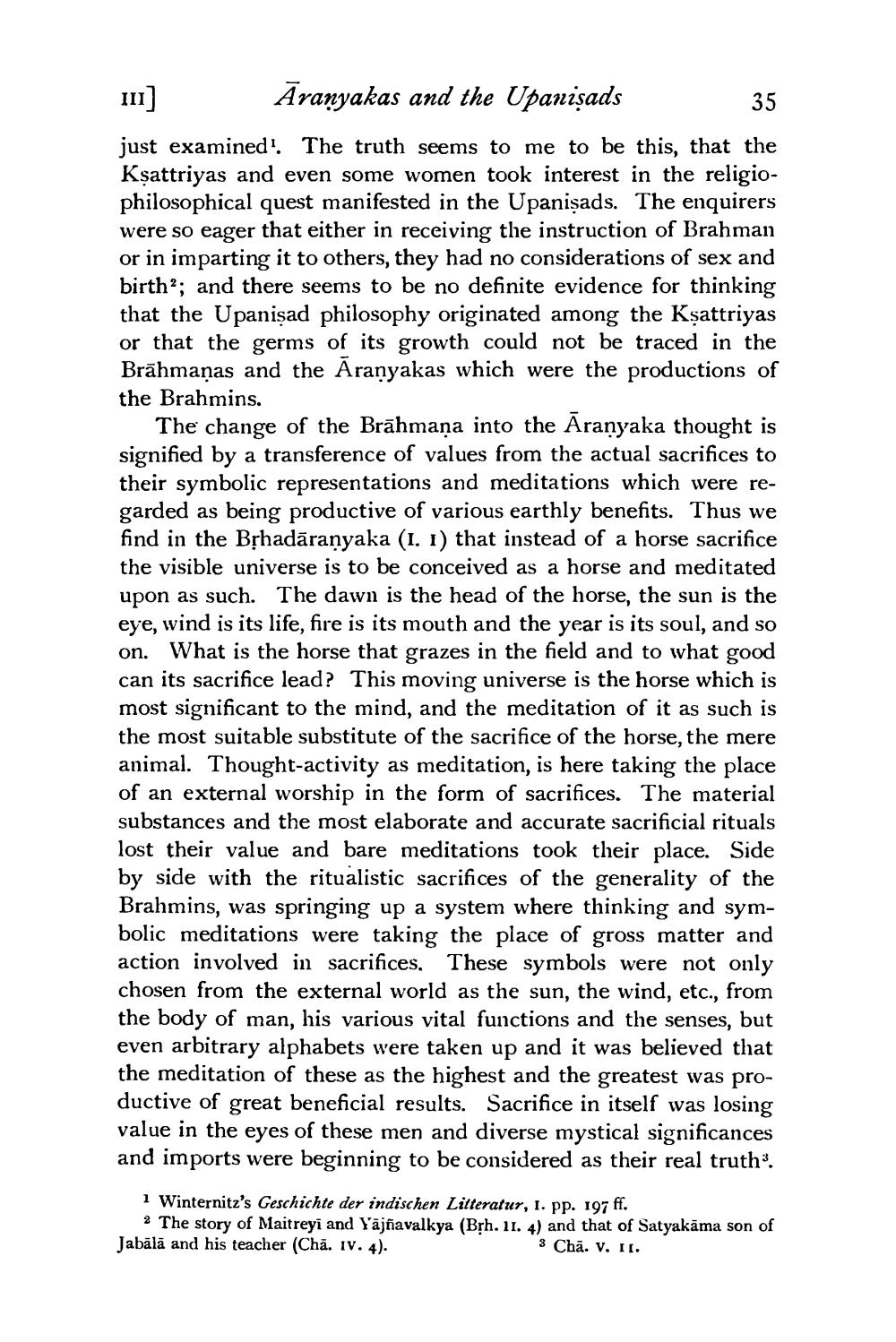________________
1]
Āranyakas and the Upanisads
35
just examined! The truth seems to me to be this, that the Kşattriyas and even some women took interest in the religiophilosophical quest manifested in the Upanişads. The enquirers were so eager that either in receiving the instruction of Brahman or in imparting it to others, they had no considerations of sex and birth?; and there seems to be no definite evidence for thinking that the Upanişad philosophy originated among the Kşattriyas or that the germs of its growth could not be traced in the Brāhmaṇas and the Aranyakas which were the productions of the Brahmins.
The change of the Brāhmaṇa into the Āranyaka thought is signified by a transference of values from the actual sacrifices to their symbolic representations and meditations which were regarded as being productive of various earthly benefits. Thus we find in the Bșhadāranyaka (I. I) that instead of a horse sacrifice the visible universe is to be conceived as a horse and meditated upon as such. The dawn is the head of the horse, the sun is the eye, wind is its life, fire is its mouth and the year is its soul, and so on. What is the horse that grazes in the field and to what good can its sacrifice lead? This moving universe is the horse which is most significant to the mind, and the meditation of it as such is the most suitable substitute of the sacrifice of the horse, the mere animal. Thought-activity as meditation, is here taking the place of an external worship in the form of sacrifices. The material substances and the most elaborate and accurate sacrificial rituals lost their value and bare meditations took their place. Side by side with the ritualistic sacrifices of the generality of the Brahmins, was springing up a system where thinking and symbolic meditations were taking the place of gross matter and action involved in sacrifices. These symbols were not only chosen from the external world as the sun, the wind, etc., from the body of man, his various vital functions and the senses, but even arbitrary alphabets were taken up and it was believed that the meditation of these as the highest and the greatest was productive of great beneficial results. Sacrifice in itself was losing value in the eyes of these men and diverse mystical significances and imports were beginning to be considered as their real truth'.
1 Winternitz's Geschichte der indischen Litteratur, 1. pp. 197 ff.
2 The story of Maitreyi and Yājsavalkya (Bph. 11. 4) and that of Satyakāma son of Jabālā and his teacher (Chā. IV. 4).
3 Chā. V. II.




